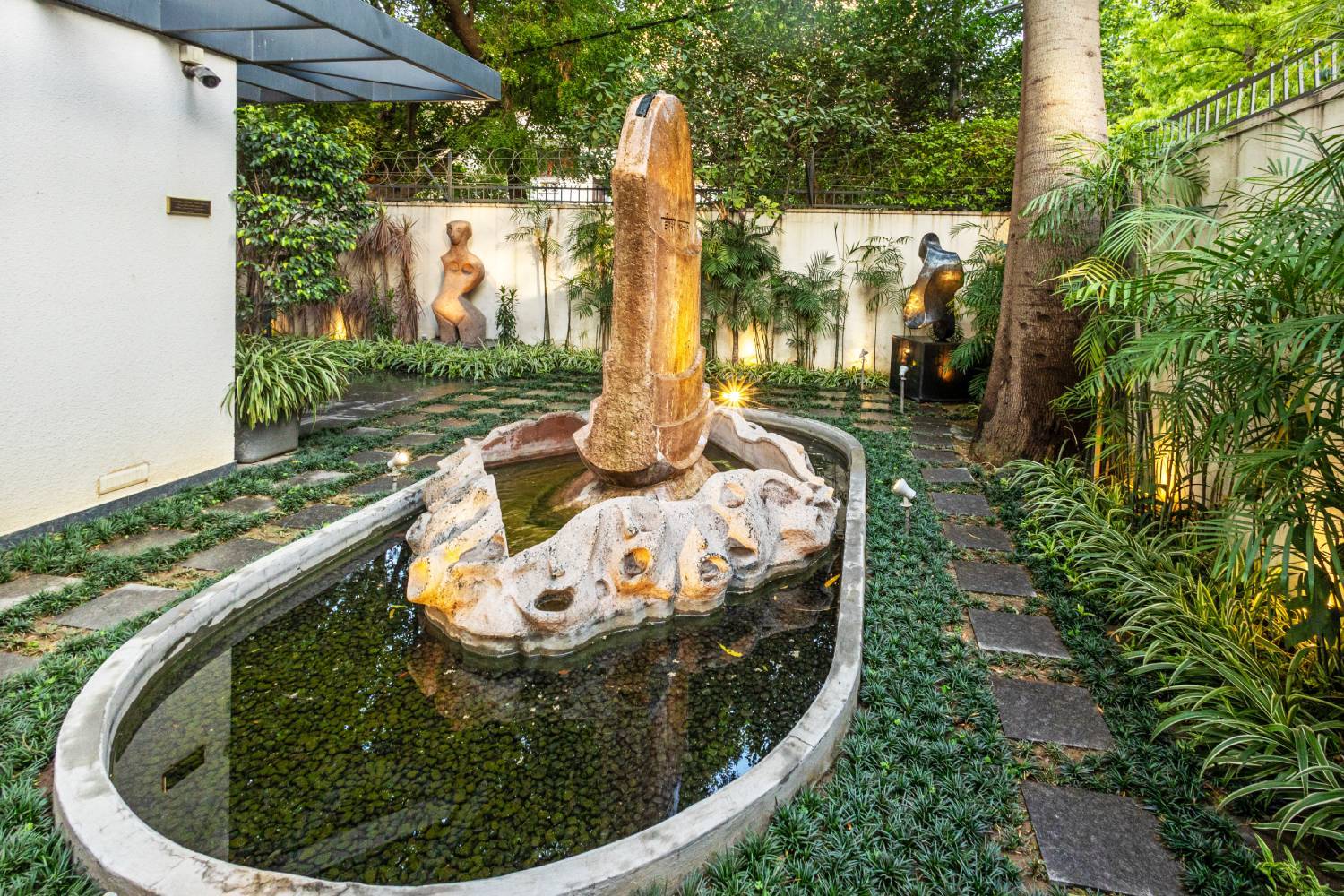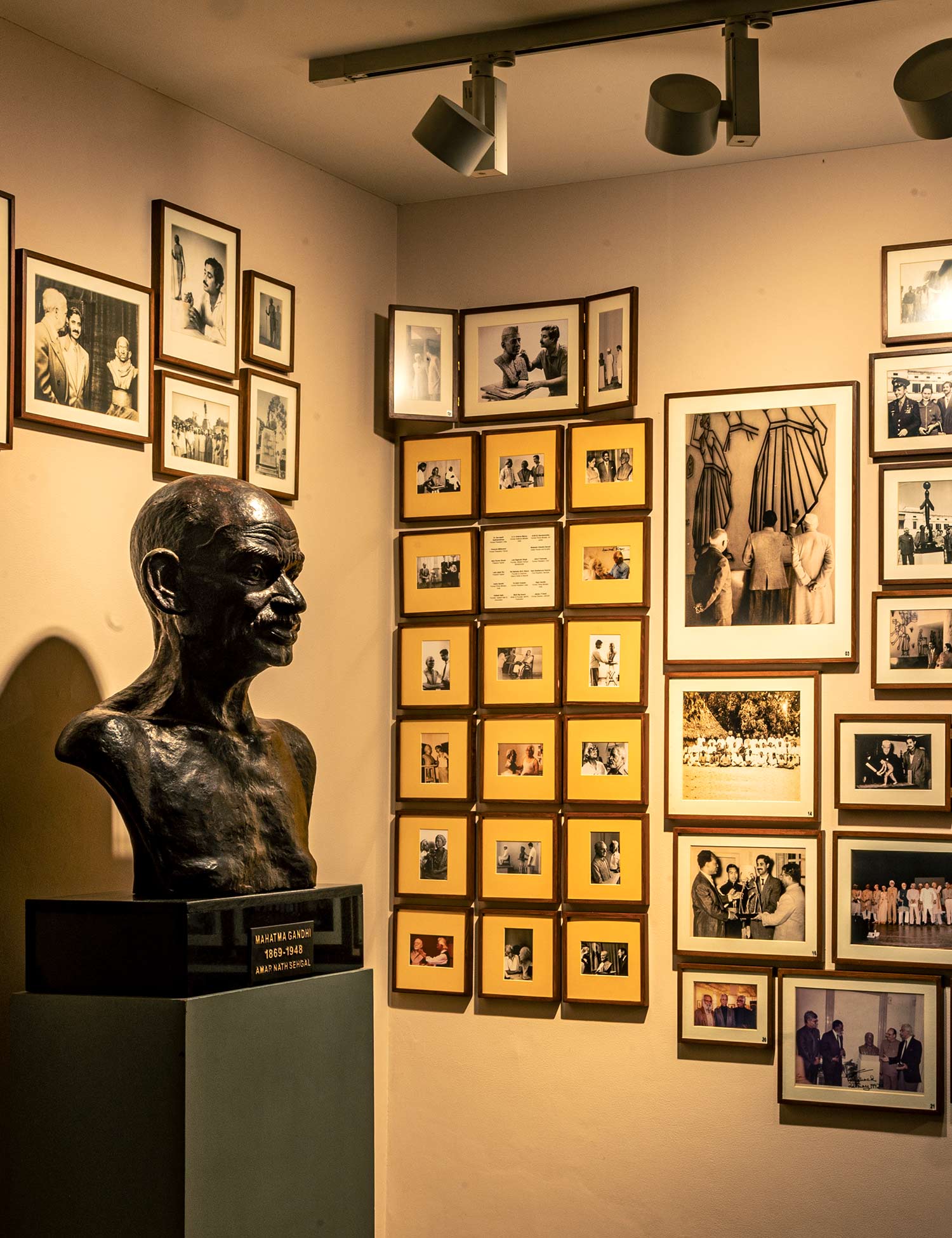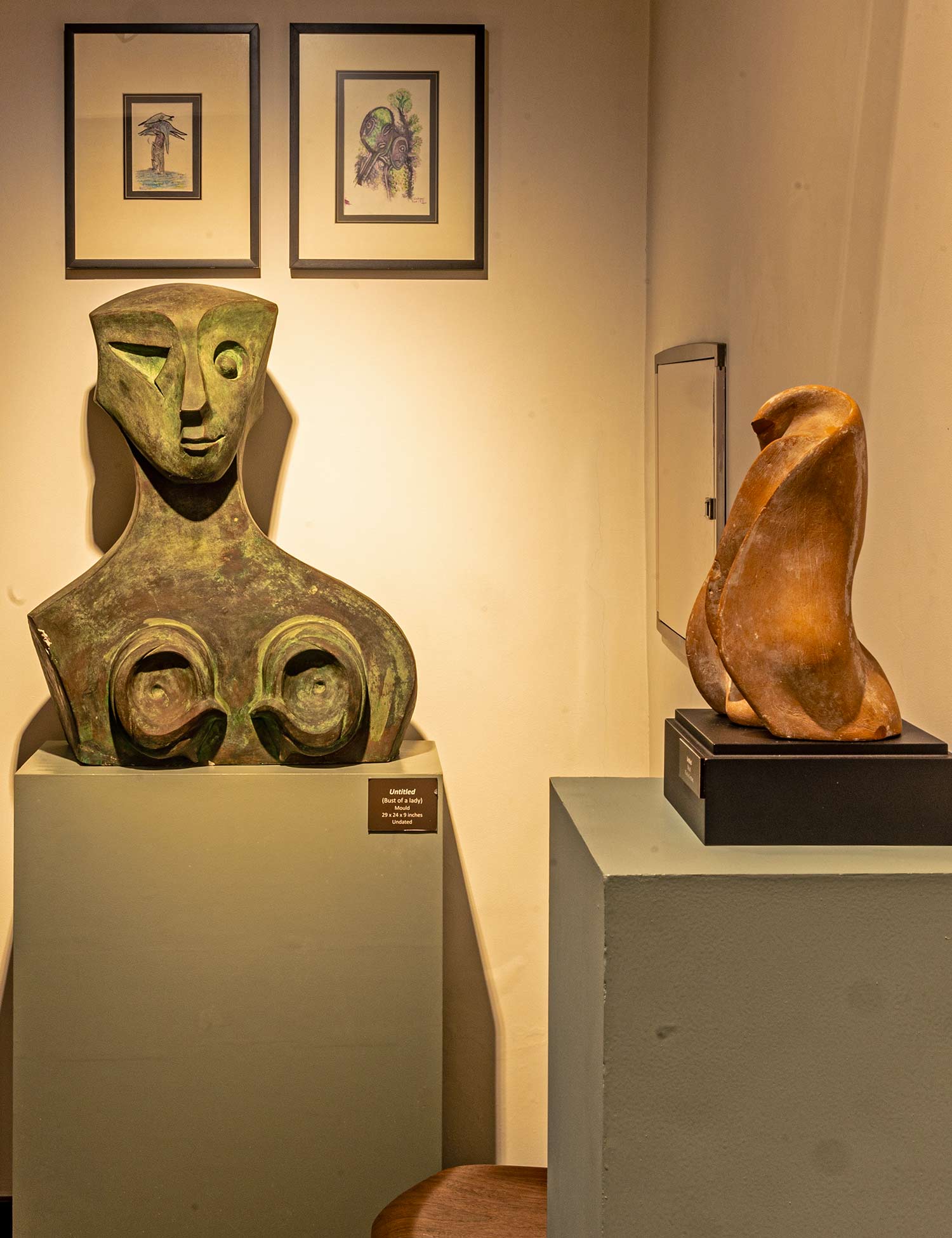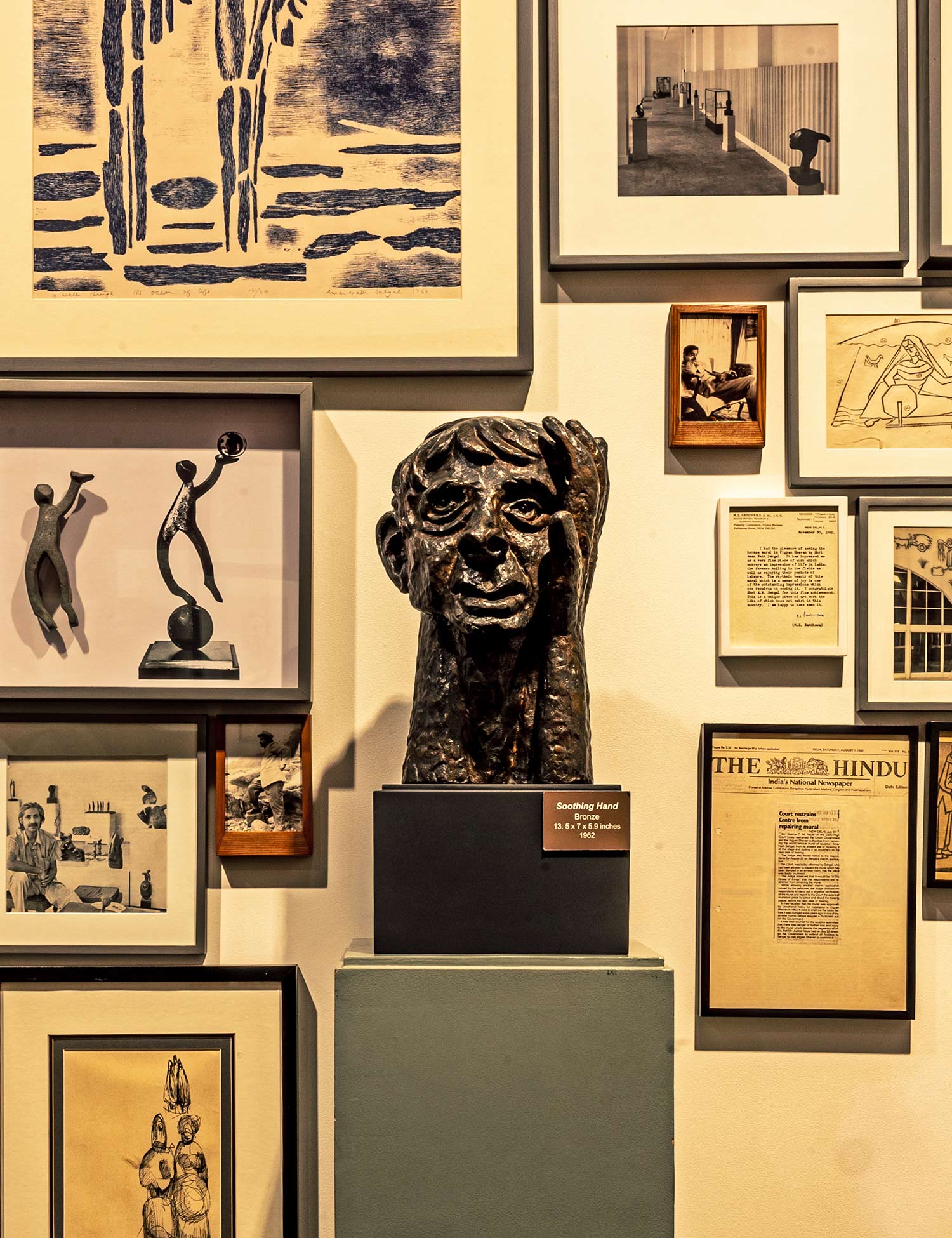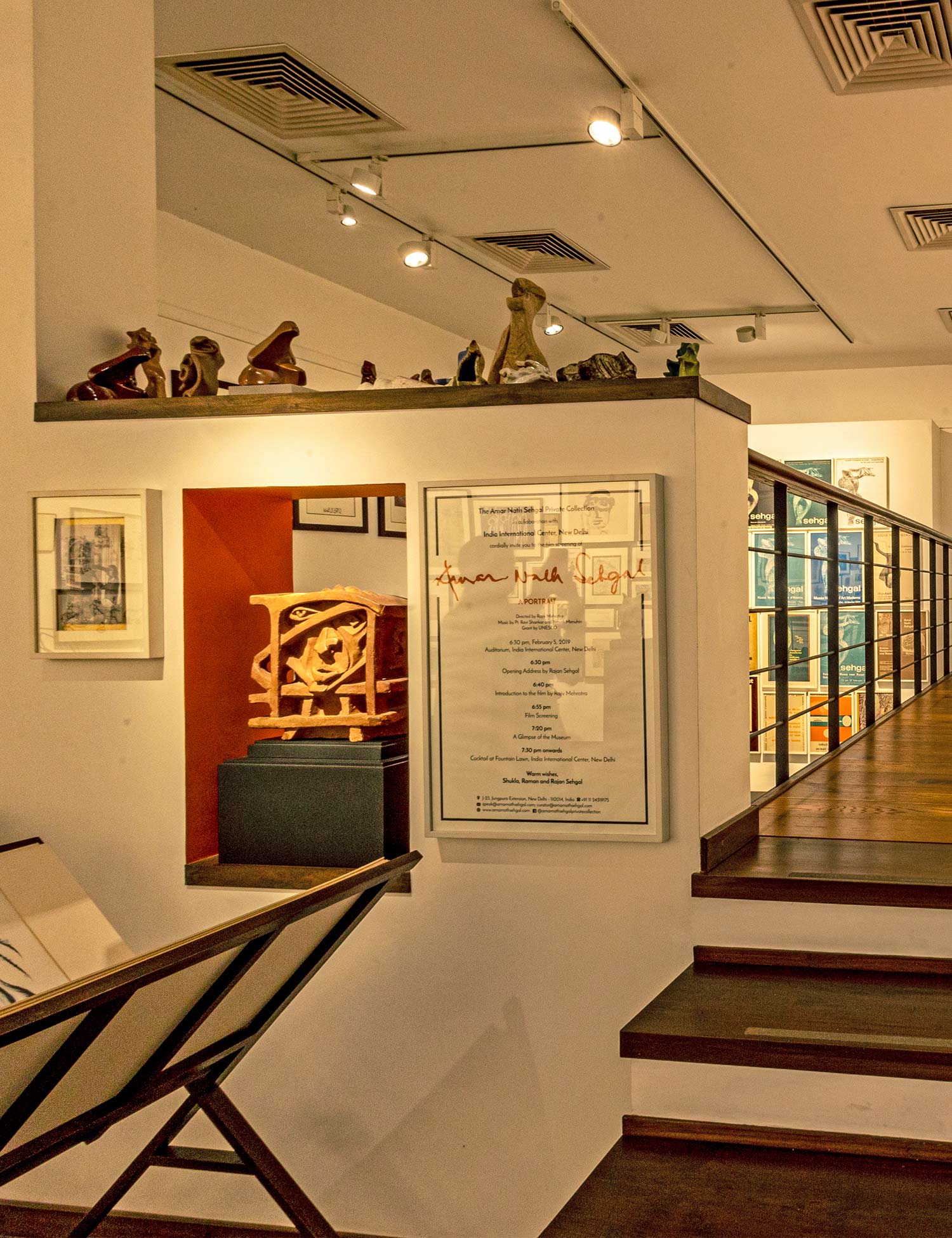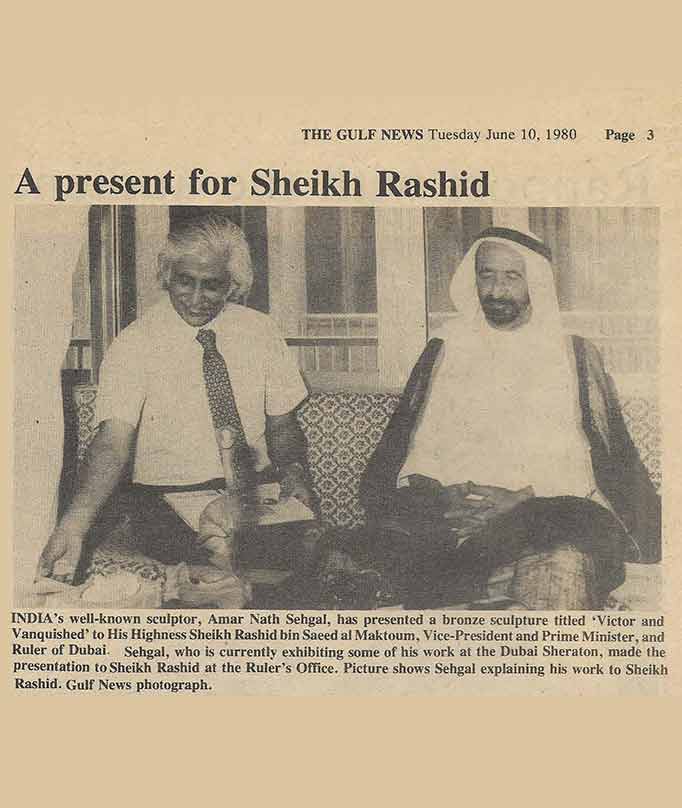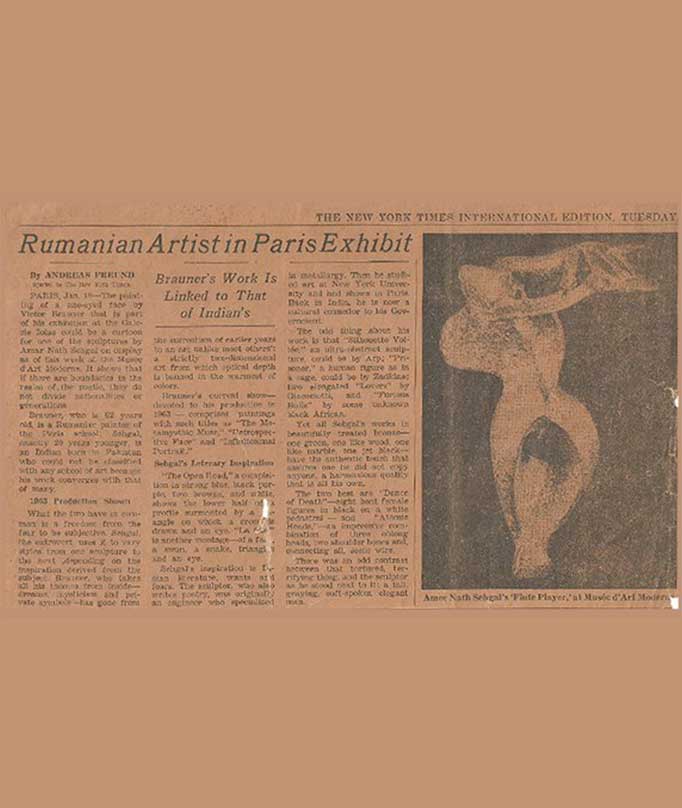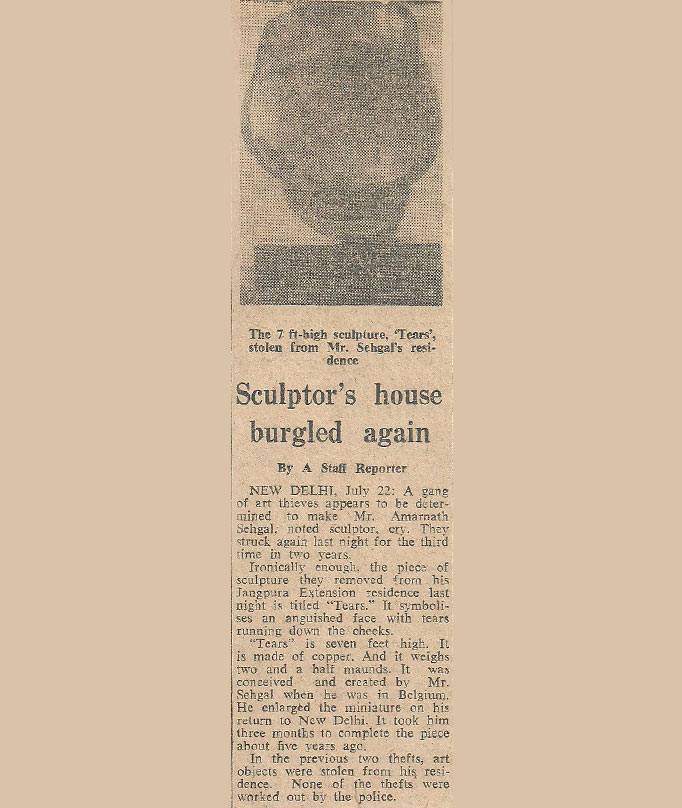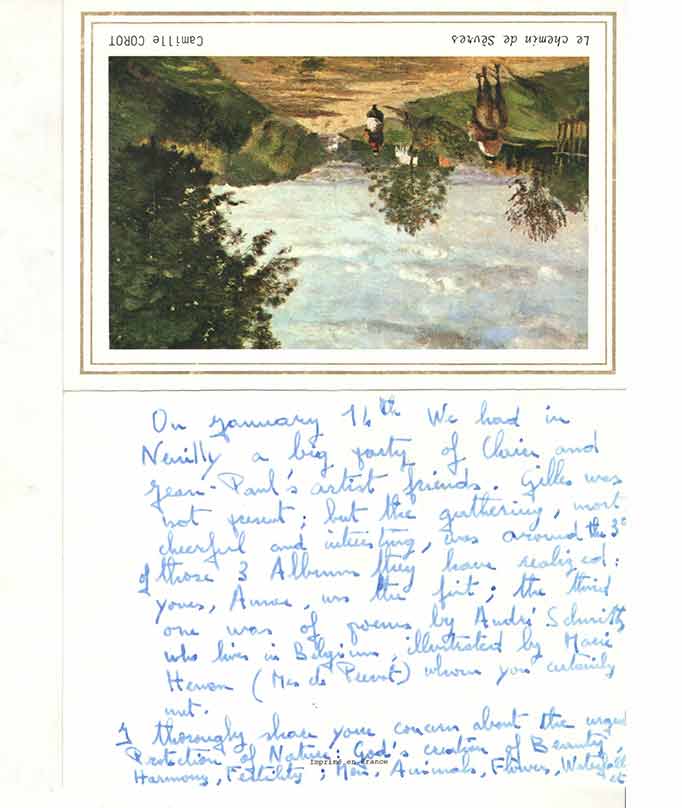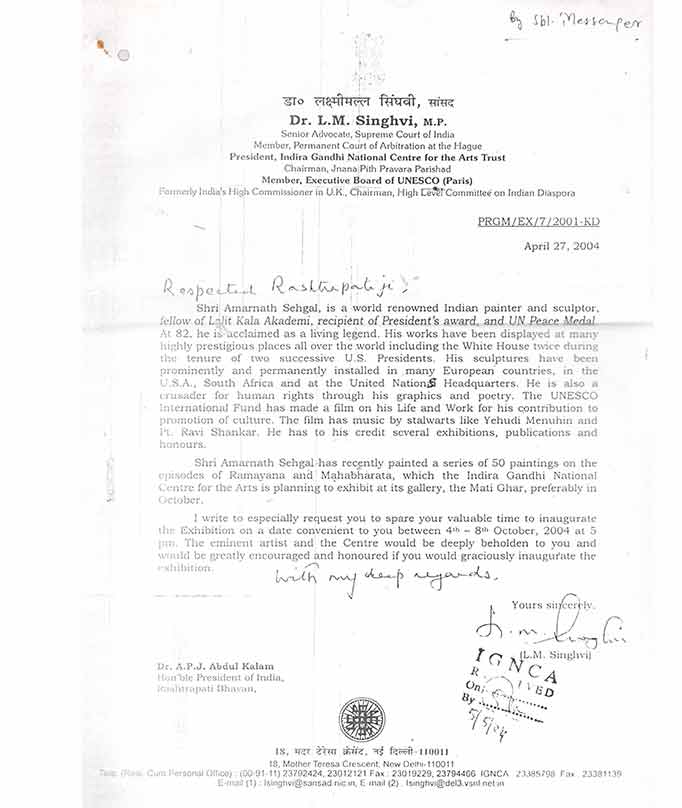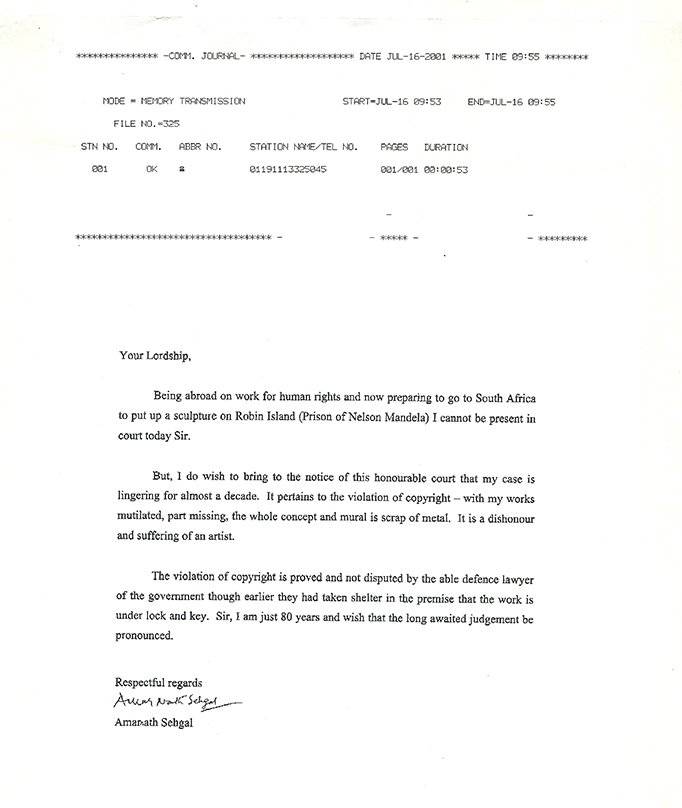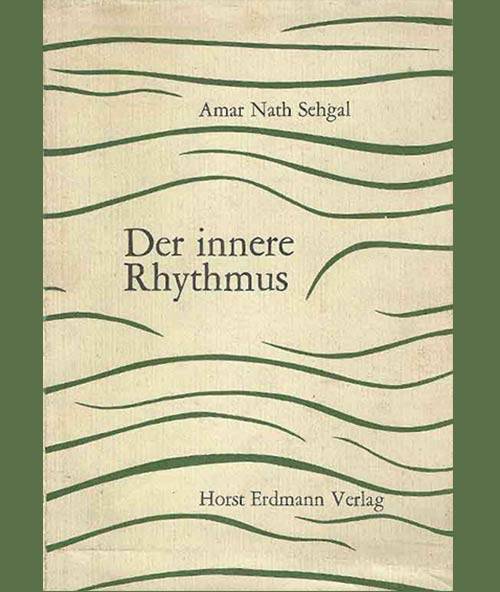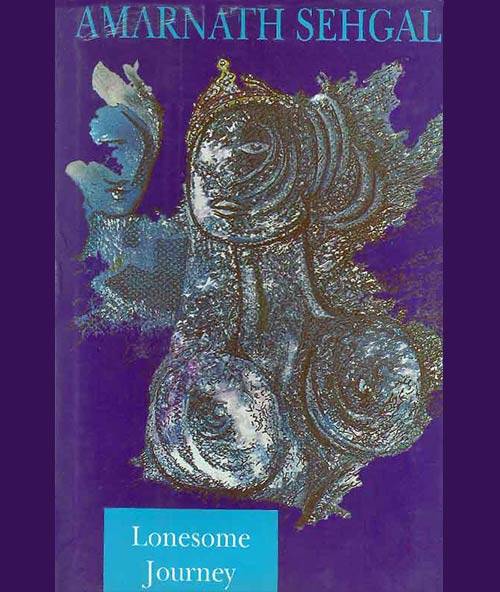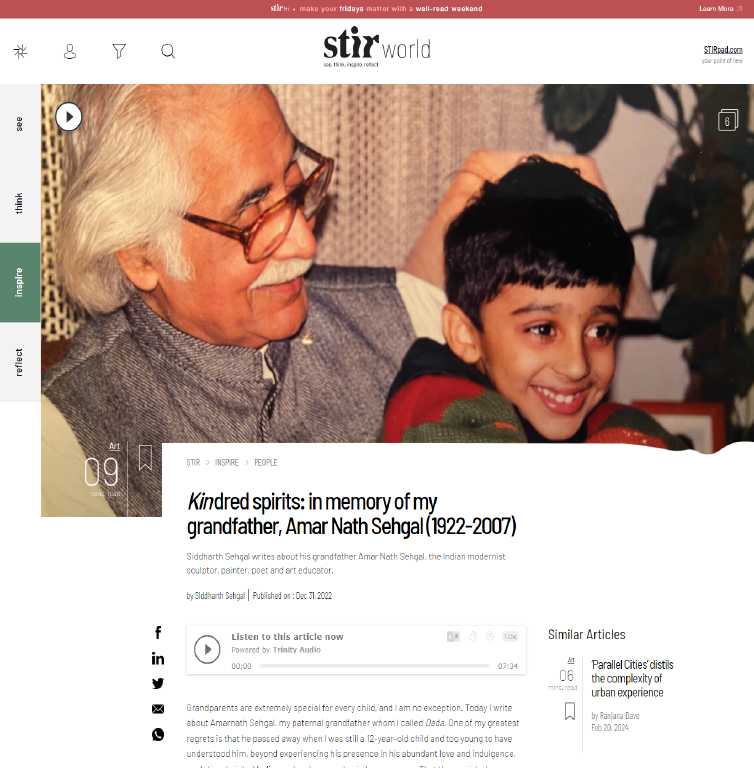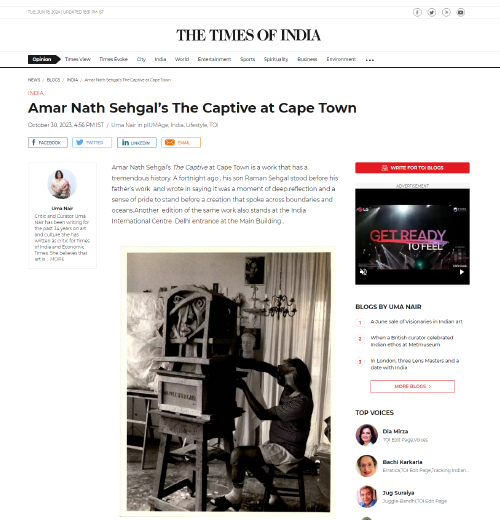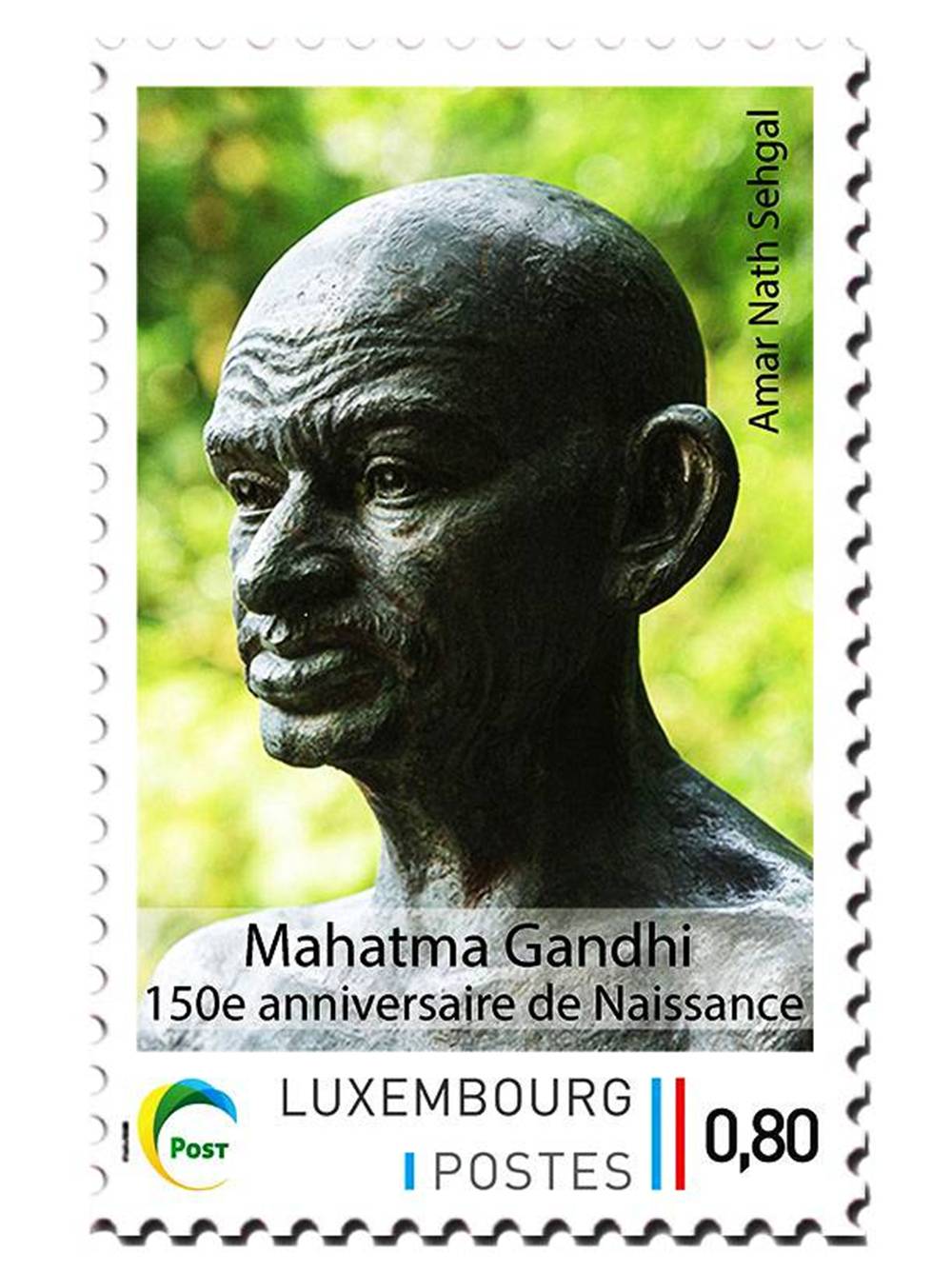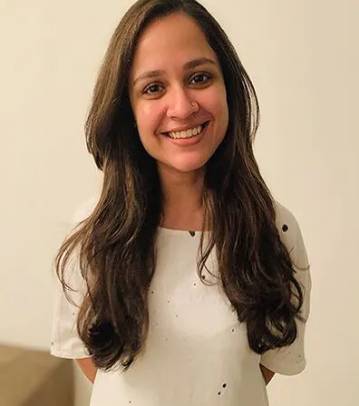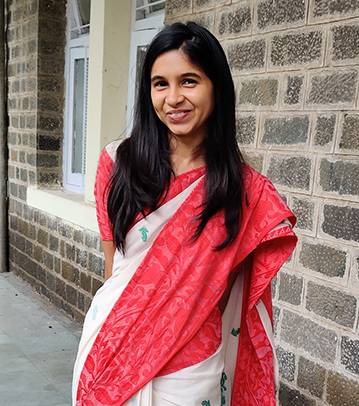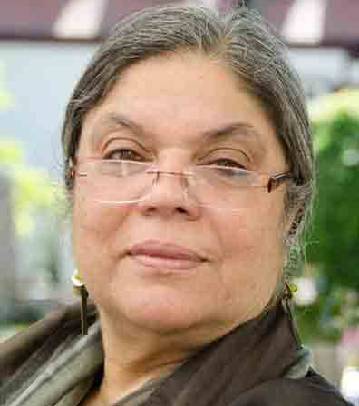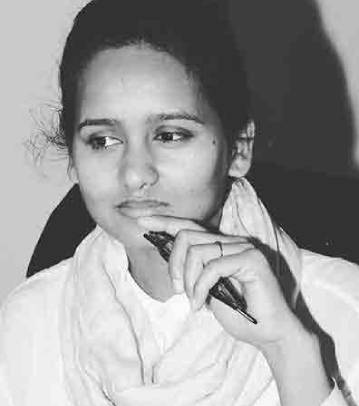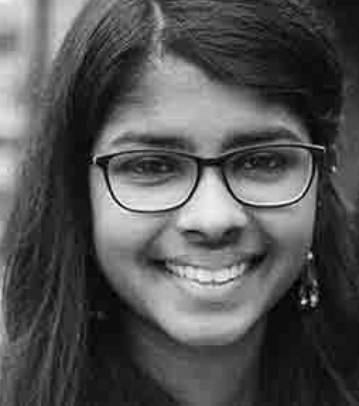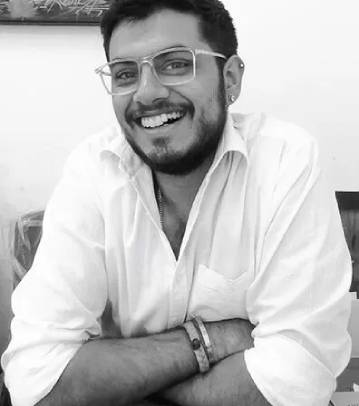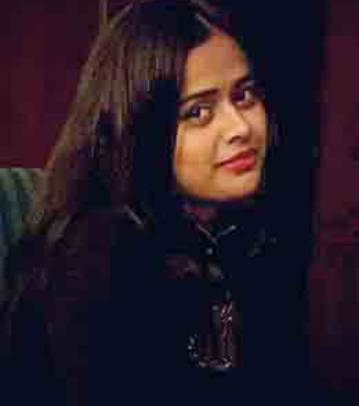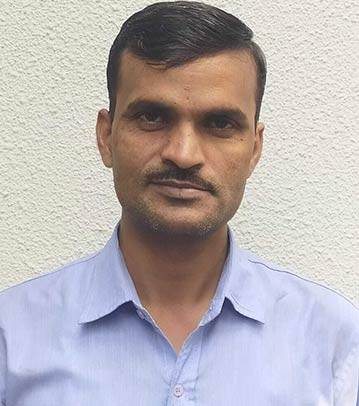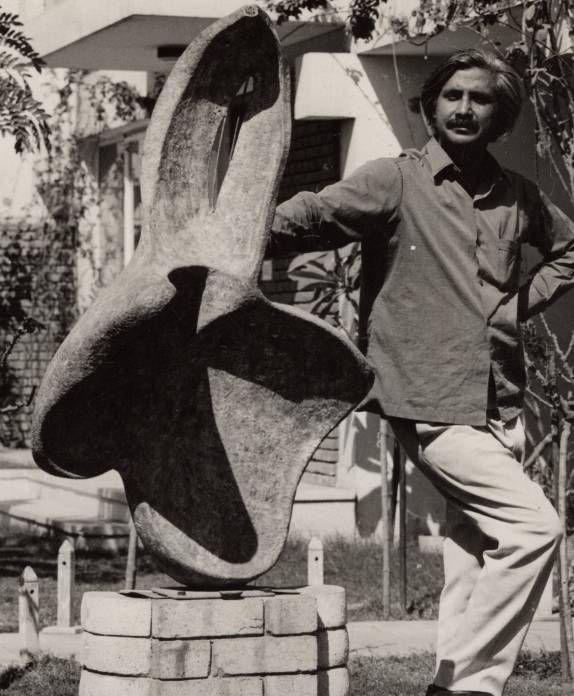
The Studio
If you are wondering what makes this museum the only one of its kind in the country, then let us tell you, its charm lies in the location.
Tucked away in the residential locality of Jangpura, a corner home with an attached studio, is a multilevel structure that was built with the intention of creating large scale sculptures, a gallery for viewing and a personal space for new ideas.
Opposite the Lala Lajpat Rai park, there is greenery on the two sides of the museum, it has proven to be a haven for the artistic soul that still resides here.
Published Articles
Publication and Catalogues
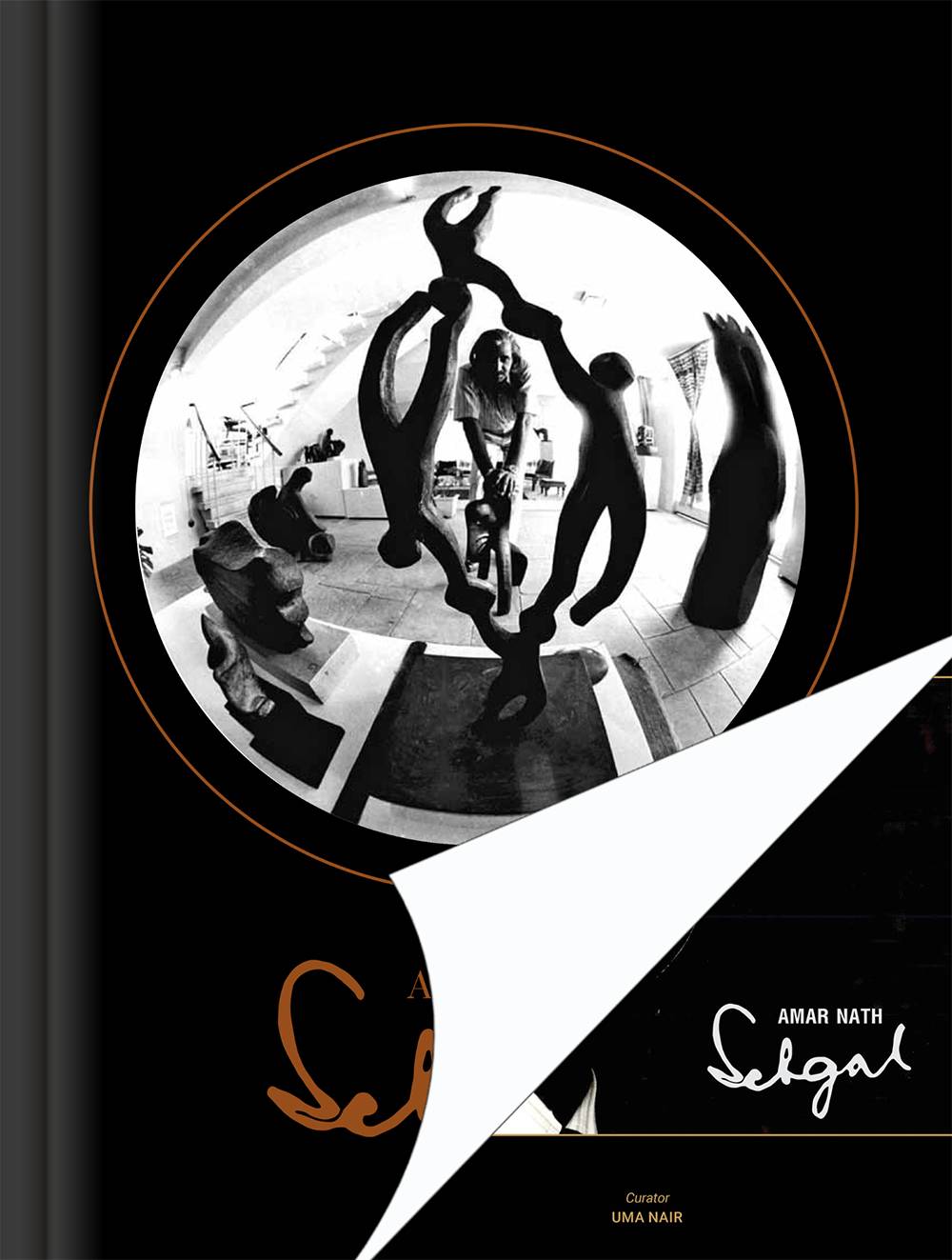
Stamp Collection
Two nations eternalize the arts
The Governments of India and Luxembourg joined hands to commemorate the artist on two occasions.
Team
Notes from the Team
- Raman Sehgal
- Rajan Sehgal
- The Team
My father was a sensitive man… a man of ideals and emotion, affected by all that he saw around him. He was moved by people and places, beauty and aesthetics, culture and strength, power and humility, suffering and conviction… He tried to project his impressions through his art. As he often said, his art was the only medium he had, and felt it was his duty… his calling… to depict what touched him, as honestly and effectively as he could.
He had an inner sense of right and wrong, something that was inherent in him. He felt the causes of the oppressed and the downtrodden had to be propagated for the world to know and see. For him, the suffering endured by the poor, the powerless and the downtrodden, needed a voice… something his artistic renderings could convey. His works on religious conflicts, the Holocaust and the horrors perpetuated by the Nazis against the Jews, the inhumanity of the Apartheid system, etc., are a few examples of his portrayals against injustice, and the suffering the subjugated have had to endure.
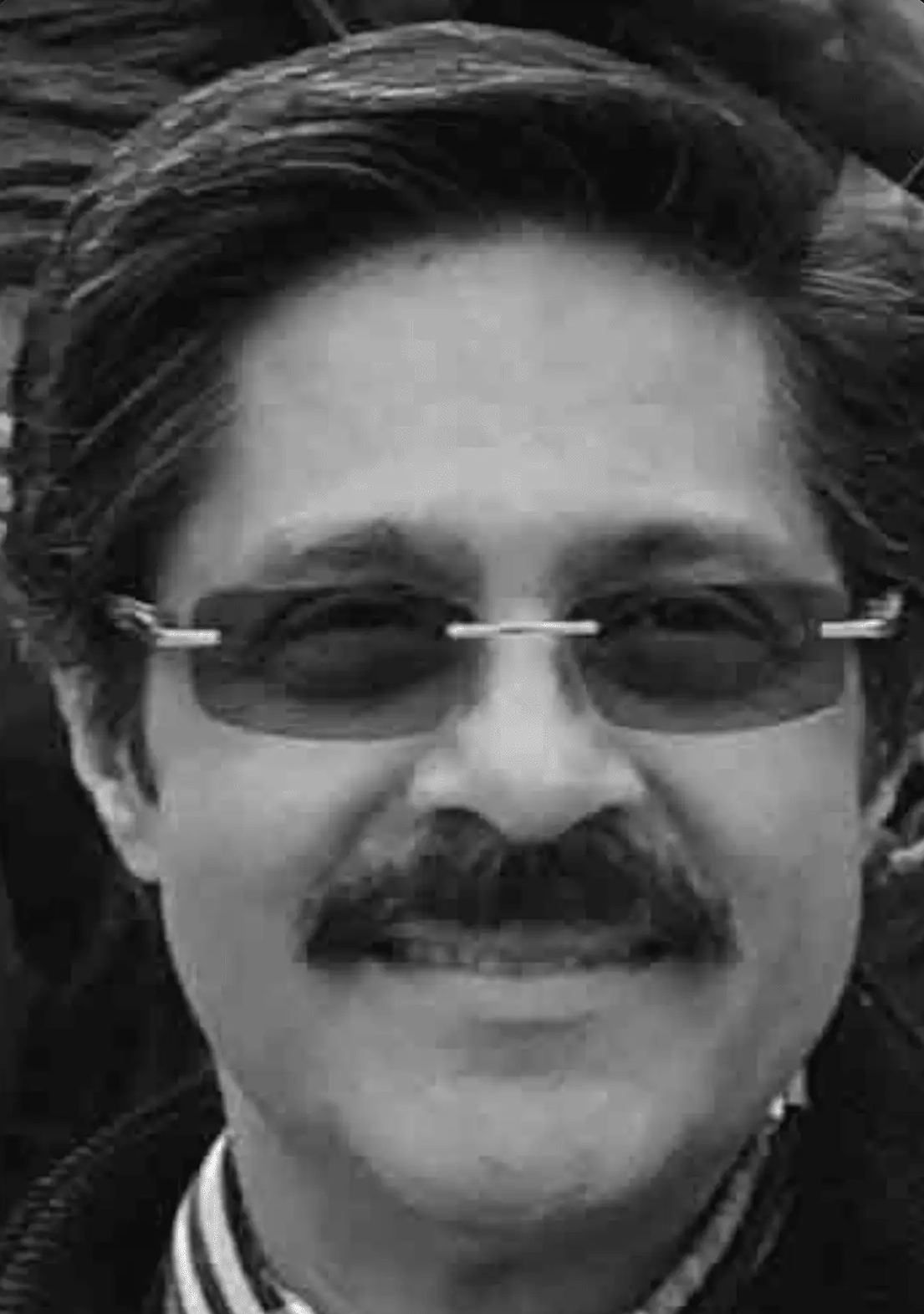
My father’s studio has always been a very special place for me. As a child it was the only place where I could hide from the world amidst a riot of colour and confusion, where there was no rules or boundaries, where under his loving gaze I could just be!
Whereas all my friends’ fathers went to their offices, clad in suits and ties, my father with his long untamed locks and dreamy eyes would be lost in his own world within the studio where he was both accessible yet remote, driven by a creative energy unfathomable to me! As I grew older, the mundane world of school and college took over, friends and activities distracted me and the studio became a more distant place but the vision of my father working furiously, passionately with his clay, surrounded by tools and paints, remained with me. Although he spoke little of his life’s tribulations, I would often wonder what had made him change paths from a being a metallurgical engineer to stowing away on a ship for the US to study art at New York Univeristy ! Our lives would have been more comfortable if he had walked the conventional path. Money was a challenge and he had to travel the world to find collectors for his works and keep the kitchen fires burning.
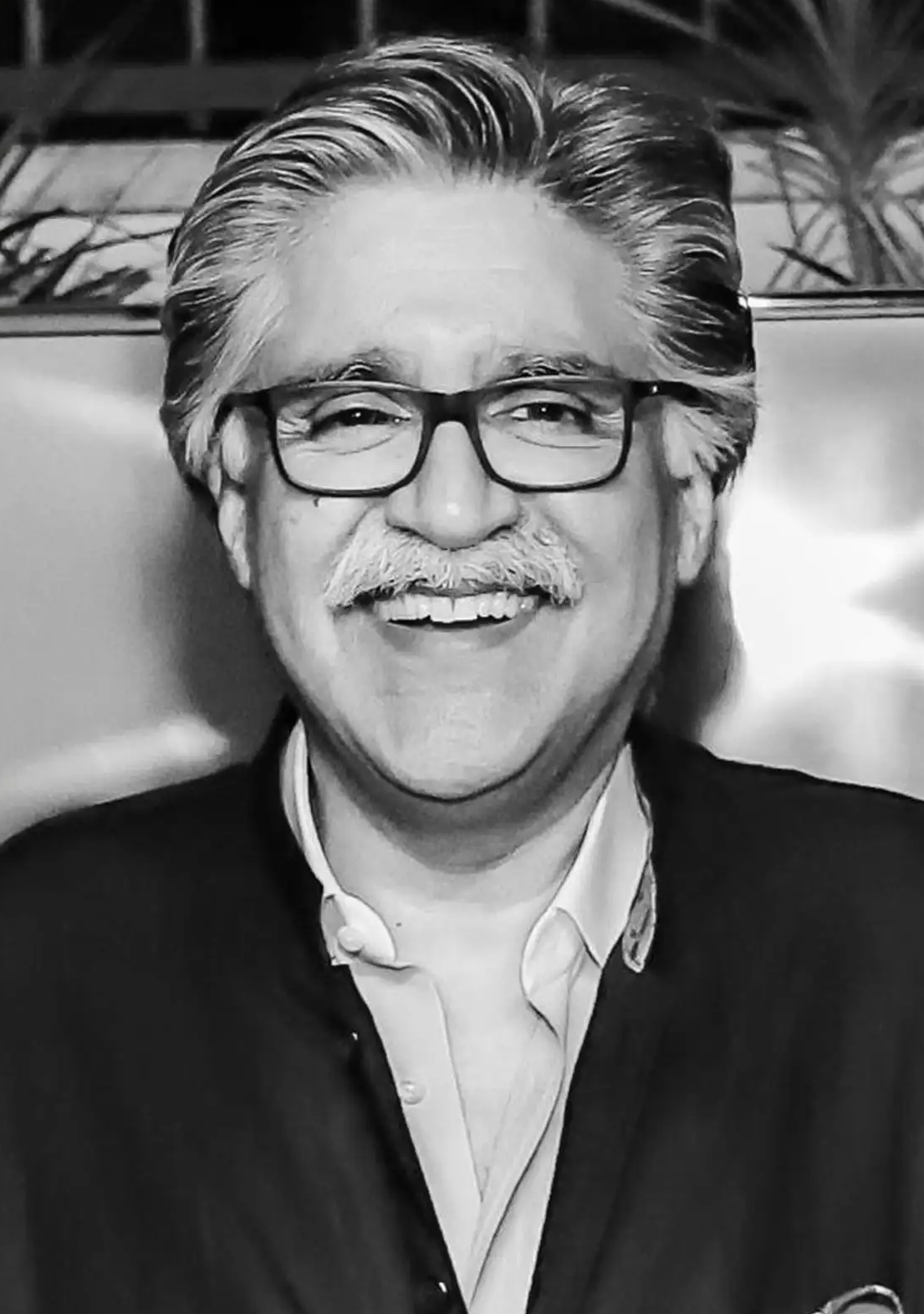
Let me tell you not one story but two: so intertwined and inter-reliant that the former would not have existed without the later and the later would perhaps have not been discovered and narrated today without the former’s existence. The first story came to life ten years after the demise of the second.
The first is a two year journey full of intense moments: of harrowing self doubts, arguments with self, spurts of love, of being with the other with bouts of frustrations, delightful discoveries, passionate dialogues and discussions on art and those ever elusive moments of peace and delight when one knows oneself through the other more intimately. This was and still continues to be my story as an archivist and curator at the archives and museum of the artist, Amar Nath Sehgal.
The second one was a sixty year long story of reconciliation: the life and art of the Indian modern artist, Amar Nath Sehgal, a man in constant struggle for nearly six decades with the memories of Partition. Because true creative expression does not come easy. It starts with a wandering into the outside world that gradually turns inwards. The creative process for such an artist is not easy. He has to cleave through layers of experiences, memories and emotions, of ingrained training in seeing, thinking and working patterns and come to terms with the fact that one truly does not know, that one has to unlearn all that was taught, unsee all that was seen and rediscover the essence: the true meaning of existence and once found, celebrate it.



